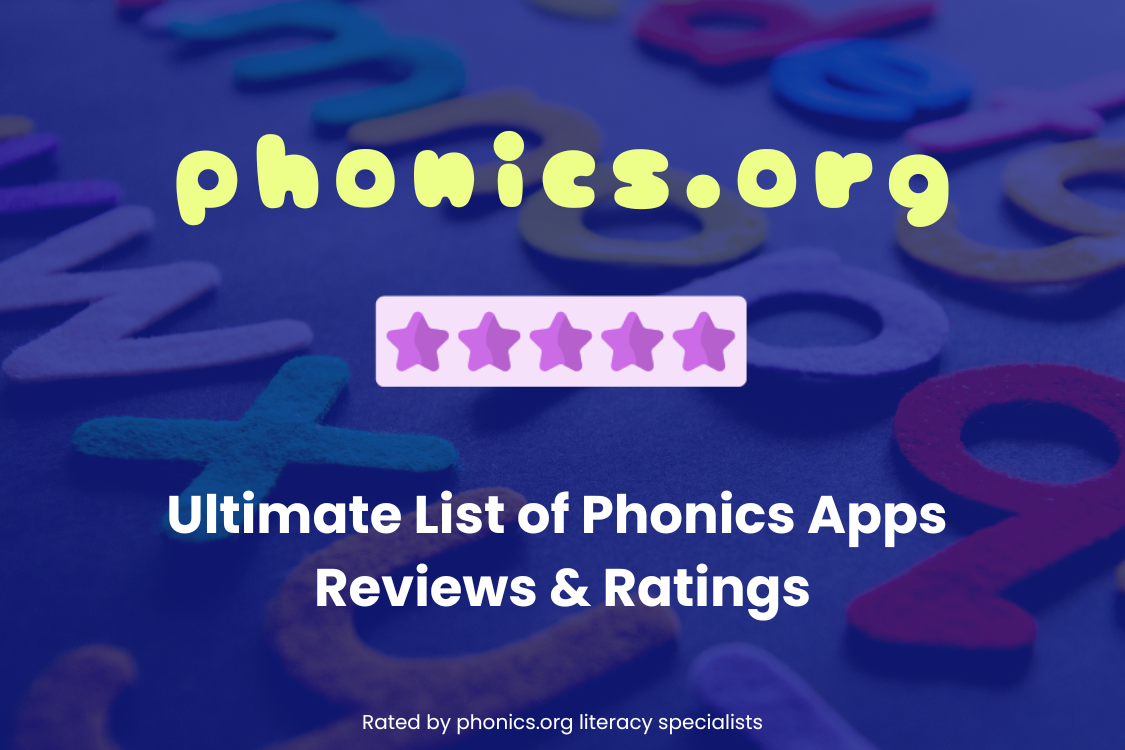Accessible Literacy Learning (ALL) App Review
Empowering Nonverbal Learners with Phonics and Reading Skills
Are you curious about other literacy apps that may be a good match for your child? Check out additional expert reviews at phonics.org.
Continue reading to learn more about the Accessible Literacy Learning (ALL) app.
What is Accessible Literacy Learning (ALL)?
The ALL (Accessible Literacy Learning) program is designed to help nonverbal students, particularly those who require augmentative and alternative communication (AAC), develop foundational reading skills. Priced at $79.99 USD, it offers an evidence-based approach that allows learners to engage with the material using touch, eye gaze, or scanning instead of verbal prompts.
The ALL app covers six key reading skills:
- Sound-blending
- Phoneme segmentation
- Letter-sound correspondence
- Single word decoding
- Sight word recognition
- Shared reading
The ALL app progresses through these skills in various degrees of difficulty moving from easy to more difficult.
Is the ALL App Easy to Use?
The following factors impact the usability of the ALL app.
Getting Started With ALL
Getting started with the ALL program is straightforward and relatively simple. A short introductory video provides a clear and quick guide to help users begin, while additional system tutorial videos in the Teacher Mode offer further support. Setting up student profiles is simple and requires minimal information, with the flexibility for multiple children to use the same license.
Teacher Mode also includes convenient features like individual student reports, tracking session frequency, duration, and performance data from student sessions. Switching between Teacher and Student Modes is easy, and both modes are designed to be highly navigable, ensuring a smooth experience for both educators and learners.
Getting started with the ALL app is simple and straightforward.
Modes of Play
The ALL program features three modes of play:
- Independent Mode– student independently completes activities and records data (default mode)
- Practice Mode – student completes activities independently or with a facilitator (data not recorded)
- Teacher-Assisted Mode– teacher provides some instruction while student completes activities
There is also an option to access a library of books in addition to progressing through the lessons. While the game instructions are clear and concise, they are not repeatable, which could pose a challenge for some learners needing to review the instructions.
Advanced Settings
The ALL app offers customizable settings, including advanced options to adjust the text-to-speech rate and response delay. It is advisable to adjust two important advanced settings:
- Text-to-speech rate controls how quickly the instructor speaks
- Response delay sets how much time a student has to answer before the app provides a response
It is highly recommended to tailor these settings to meet the specific needs of each learner. Slowing down the response time could significantly improve the learning experience for many students, making it more effective and accessible.
Adjusting the advanced settings is important in the ALL app
Engagement in the ALL App
The following factors influence user engagement in the ALL app.
Rewards
The ALL program uses positive reinforcement to motivate students, providing encouraging messages like “You’re right!” along with a rewarding sound and a short and simple animation. There are no distracting reward systems, which helps maintain focus on learning and emphasizes intrinsic motivation. Additionally, students can earn “Skill Acquisition Badges” for successfully mastering specific skills, further rewarding their progress in a meaningful way without taking away from valuable learning time.
Progression and Pace
The ALL program includes an animation at the top of the screen that shows how many questions have been answered and how many remain in the activity set. This feature helps students predict the duration of the task, offering a sense of progression.
However, the timing for answering questions can be frustrating. There is a narrow window to tap on the correct answer—if tapped too early, nothing happens; if tapped too late, the app provides the answer and quickly moves on. Requiring a delicate and specific time to answer questions could be frustrating and unmotivating for some young learners.
Literacy Learning With the ALL App
The following factors influence the quality of literacy instruction in the ALL app.
Direct and Sequential Phonics Instruction
The ALL app follows a direct and sequential learning approach to literacy learning. This is recommended by literacy experts for building skills from simple to more complex concepts, ensuring mastery at each step. The scope and sequence of the program are clearly outlined and publicly available in the online manual, even without purchasing the app—this is a great feature for transparency and connection to classroom or at-home practice.
The ALL app uses synthetic phonics, which focuses on blending and segmenting individual letter sounds. This is an efficient method of learning to read and spell words. The letter sounds are clearly and accurately represented, which is another great feature.
Students are considered to have mastered a skill once they achieve 80% accuracy or higher in two consecutive sessions on that skill. For instructors who prefer more flexibility, there is an option to override this process by using the “Set As Acquired” button on the Skill Overview screen, allowing them to mark a skill as mastered immediately.
Phonemic Awareness
The Phonemic Awareness section of the ALL app provides a solid foundation for learners, especially when it comes to critical skills like blending and segmenting sounds, which are key to reading and spelling. The app begins by showing four real photographs, with the corresponding vocabulary spoken aloud, which also builds vocabulary skills. Repetition of the pictures further reinforces learning.
The app effectively models phonemic awareness skills and encourages learners to apply these skills to answer questions. One standout feature is the app’s use of continuous blending, which is an excellent way to help students learn to read words. In continuous blending, sounds are pronounced without stopping or pausing between them – for example, when reading “am,” the “a” sound is held continuously and flows directly into the “m” sound, rather than breaking it up into separate sounds. While it’s rarely featured in other literacy apps, ALL’s implementation of continuous blending is a valuable addition to its teaching toolkit.
However, while the app introduces phoneme segmentation tasks, these are more aligned with phoneme isolation. Instead of having learners break words into their individual sounds, they are asked to identify the first sound in a word. Though both tasks are valuable, the labeling of these activities as segmentation is slightly misleading.
Learners are asked to choose a picture that starts with the highlighted letter sound.
Shared Reading
The Shared Reading feature in the ALL app is designed to support nonverbal learners by allowing them to interact with sentences read aloud by the app. The learner is prompted to complete a sentence by tapping on a corresponding picture.
However, the app’s computer-generated voice reads the sentences in a fast and monotone manner. It is not the same clear voice used in other parts of the app. The voice lacks expression or fluency, making it sound robotic and abrupt, which makes it difficult to understand.
Players are expected to tap a picture that represents the highlighted word in the sentence.
Is the ALL App Good for Learning to Read?
The Accessible Literacy Learning (ALL) app is a valuable tool for helping nonverbal students, particularly those who rely on augmentative and alternative communication (AAC), build foundational literacy skills. It offers an evidence-based, systematic approach to teaching phonemic awareness, blending, and sight word recognition. The app provides customizable settings, modes of play, and positive reinforcement techniques to keep students engaged. However, while it has strong features, there are areas in need of improvement.
The phonemic awareness section is particularly strong, especially with the inclusion of continuous blending, a feature not commonly found in other literacy apps. However, the app’s shared reading function falls short, largely due to the poor quality of the computer-generated voice, which undermines the fluency and expression essential for effective learning.
Despite these issues, the ALL app offers a structured and accessible approach to literacy learning for nonverbal students. Educators and caregivers should consider the app’s strengths in phonemic awareness and phonics instruction but should also be aware of its limitations, especially in shared reading. With some refinement, the ALL app has the potential to be a more effective and engaging tool for literacy development.
ALL (Accessible Literacy Learning): Overall Ratings
Quality of Literacy Instruction: 3.5 / 5
Usability: 4.5 / 5
Engagement: 3 / 5





































